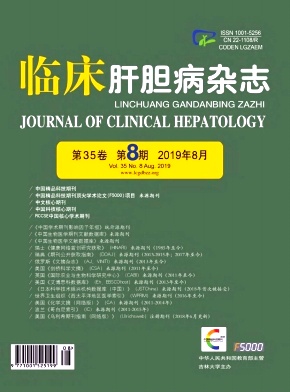|
[1] SANKARARAMAN S, RIEL-ROMERO RM, JEROUDI M, et al. Epstein-Barr virus induced hemophagocytic lymphohistiocytosis in X-linked lymphoproliferative disease[J]. J Neurosci Rural Pract, 2014, 5 (2) :171-174.
|
|
[2] GIFFORD CE, WEINGARTNER E, VILLANUEVA J, et al. Clinical flow cytometric screening of SAP and XIAP expression accurately identifies patients with SH2D1A and XIAP/BIRC4 mutations[J].Cytometry B Clin Cytom, 2014, 86 (4) :263-271.
|
|
[3] HU HL, CHEN HY, HU B, et al. Clinical features and gene mutation analysis of 4 Chinese children with X-linked lymphoproliferative disease[J]. Chin J Appl Clin Pediatr, 2013, 28 (21) :1629-1632. (in Chinese) 胡惠丽, 陈荷英, 胡冰, 等. X-连锁淋巴细胞异常增生症4例临床特点与基因突变分析[J].中华实用儿科临床杂志, 2013, 28 (21) :1629-1632.
|
|
[4] RIGAUD S, FONDANECHE MC, LAMBERT N, et al. XIAP deficiency in humans causes an X-linked lymphoproliferative syndrome[J]. Nature, 2006, 444 (7115) :110-114.
|
|
[5] MARSH RA, VILLANUEVA J, ZHANG K, et al. A rapid flow cytometric screening test for X-linked lymphoproliferative disease due to XIAP deficiency[J]. Cytometry B Clin Cytom, 2009, 76 (5) :334-344.
|
|
[6] WANG JF, YAN Y. Research progress of inhibitor of apoptosis protein Xl AP[J]. Med Recapitulate, 2013, 19 (21) :3865-3867. (in Chinese) 王俊丰, 闫勇. X染色体连锁凋亡抑制蛋白的研究进展[J].医学综述, 2013, 19 (21) :3865-3867.
|
|
[7] AQUILAR C, LATOUR S. X-linked inhibitor of apoptosis protein deficiency:More than an X-linked lymphoproliferative syndrome[J]. J Clin Immunol, 2015, 35 (4) :331-338.
|
|
[8] REZAEI N, MAHMOUDI E, AGHAMOHAMMADI A, et al. Xlinked lymphoproliferative syndrome:A genetic condition typified by the triad of infection, immunodeficiency and lymphoma[J]. Br J Haematol, 2011, 152 (1) :13-30.
|
|
[9] NAGY N, KLEIN G, KLEIN E. To the genesis of Burkitt lymphoma:Regulation of apoptosis by EBNA-1 and SAP may determine the fate of Ig-myc translocation carrying B lymphocytes[J]. Semin Cancer Biol, 2009, 19 (6) :407-410.
|
|
[10] SCHMID JP, CANIONI D, MOSHOUS D, et al. Clinical similarities and differences of patients with X-linked lymphoproliferative syndrome type 1 (XLP-1/SAP deficiency) versus type 2 (XLP-2/XIAP deficiency) [J]. Blood, 2011, 117 (5) :1522-1529.
|
|
[11] ZHAO M, KANEGANE H, OUCHI K, et al. A novel XIAP mutation in a Japanese boy with recurrent pancytopenia and splenomegaly[J]. Haematologica, 2010, 95 (4) :688-689.
|
|
[12] MARSH RA, MADDEN L, KITCHEN BJ, et al. XIAP deficiency:A unique primary immunodeficiency best classified as Xlinked familial hemophagocytic lymphohistiocytosis and not as X-linked lymphoproliferative disease[J]. Blood, 2010, 116 (7) :1079-1082.
|
|
[13] CHIRIELEISON SM, MARSH RA, KUMAR P, et al. Nucleotide-binding oligomerization domain (NOD) signaling defects and cell death susceptibility cannot be uncoupled in X-linked inhibitor of apoptosis (XIAP) -driven inflammatory disease[J]. J Biol Chem, 2017, 292 (23) :9666-9679.
|
|
[14] SCHIMMER AD, DALILI S, BATEY RA, et al. Targeting XIAP for the treatment of malignancy[J]. Cell Death Differ, 2006, 13 (2) :179-188.
|
|
[15] JIN YY, ZHOU W, TIAN ZQ, et al. Variable clinical phenotypes of X-linked lymphoproliferative syndrome in China:Report of five cases with three novel mutations and review of the literature[J]. Hum Immunol, 2016, 77 (8) :658-666.
|
|
[16] LI WY, CHEN JS, ZHAO Q, et al. Two families of X-linked lymphoproliferative disease type 1 characterized by agammaglobulinemia[J]. Chin J Pediatr, 2017, 55 (5) :377-382. (in Chinese) 李文言, 陈金淑, 赵芹, 等.以丙种球蛋白缺乏血症为突出表现的X连锁淋巴细胞异常增生症1型两家系研究[J].中华儿科杂志, 2017, 55 (5) :377-382.
|







 DownLoad:
DownLoad: